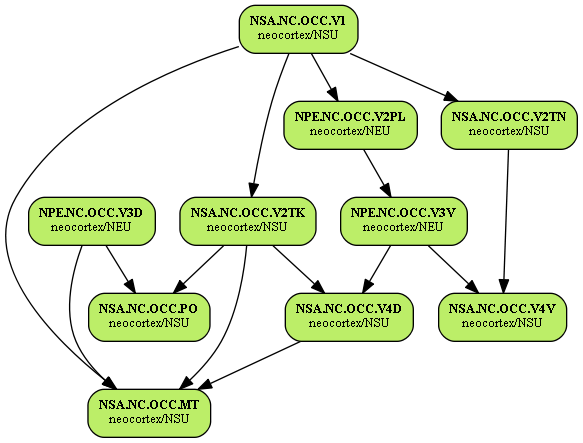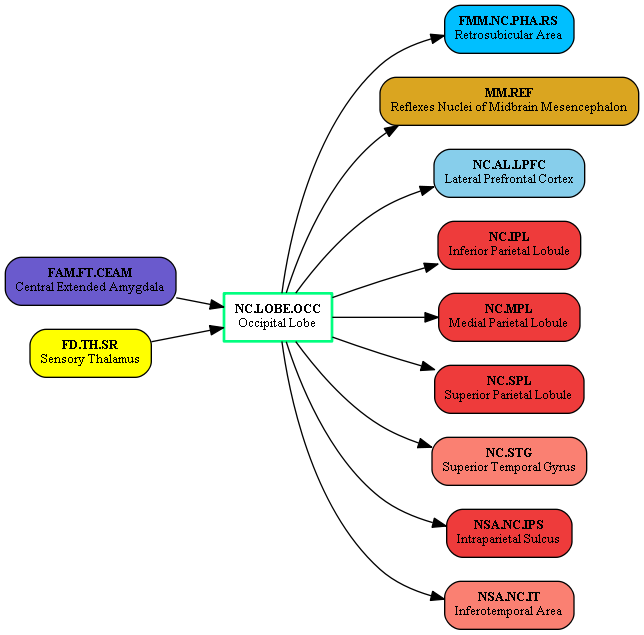BrainCenterNC LOBE OCC
From aHuman Wiki
Revision as of 09:50, 31 July 2015 by Admin (Talk | contribs) (Automated page entry using MWPush.pl)
Occipital Lobe
@@Home -> BiologicalLifeResearch -> BrainCenterNC_LOBE_OCC
This page covers biological details of component group Occipital Lobe. Component group is part of aHuman target integrated biological model.
- Top-down path to center: Cerebral Cortex -> Occipital Lobe (NC.LOBE.OCC) (see Mind Maps)
- Function:
(generated)
Components
(generated)
Component items:
- Primary Visual Cortex (NSA.NC.OCC.V1): Detect color, shape and movements
- Secondary Visual Cortex (NSA.NC.OCC.V2): Storage of Object Recognition Memory
- Secondary Visual Cortex, Thin Stripe (NSA.NC.OCC.V2TN): Extract luminance and color features
- Secondary Visual Cortex, Thick Stripe (NSA.NC.OCC.V2TK): Extract binocular disparities and stimulus orientation features
- Secondary Visual Cortex, Pale Stripe (NPE.NC.OCC.V2PL): Extract form features
- Associative Visual Cortex (NPE.NC.OCC.V3): Processing of global motion, dynamic shapes, orientation
- Dorsal Associative Visual Cortex (NPE.NC.OCC.V3D): Processing of global motion, orientation
- Ventral Associative Visual Cortex (NPE.NC.OCC.V3V): Processing of dynamic shapes
- Fusiform Gyrus (NSA.NC.OCC.V4): Recognizing shapes and colors
- Dorsal Visual Area V4 (NSA.NC.OCC.V4D): Recognizing shapes, kinetic motion
- Ventral Visual Area V4 (NSA.NC.OCC.V4V): Recognizing color
- Middle Temporal Area (NSA.NC.OCC.MT): Integration of local motion signals into global percepts
- Parietooccipital Area (NSA.NC.OCC.PO): Analyzing self-motion relative to the environment, depth
Connectivity
(generated)
Internal Regions Connections:

External Connections:

External Inbound Center Connections:
| Source Center | Reference |
| Central Extended Amygdala (FAM.FT.CEAM) | (unknown reference) |
| Sensory Thalamus (FD.TH.SR) | Thalamocortical relationships (LGN -> pLGN) |
External Outbound Center Connections: